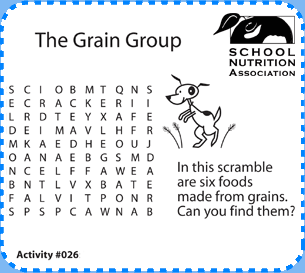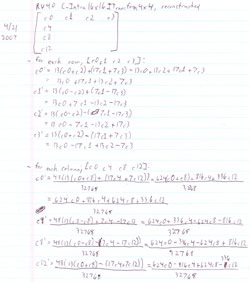So I had a little carton of chocolate milk with my lunch today (longtime readers have guessed that I must still be in elementary school). On one side of the carton was a word search puzzle that challenged me to find 6 words hidden in the jumble of letters. It occurred to me that this represented an allegory for reverse engineering.

I generally liken RE to an extraordinarily complex, or just tedious, puzzle. This is a more straightforward puzzle.
Task: Find 6 strings of characters. What strings? I wasn’t sure exactly. Lesser word searches explicitly tell you which words to find. Those puzzles can be solved via a brute force algorithm that most of us figure out by the age of 5. I knew that these had to be coherent English words. Eventually, I re-read the instructions and noticed that the words were supposed to pertain to “foods made from grain”. Lesson: Gather all the intelligence you can before delving into the meat of the puzzle.
Next, there is domain knowledge. I have done a few word search puzzles before and so I know that I am supposed to look for strings of characters running left -> right, right -> left, top -> bottom, bottom -> top, and also diagonally. And I have some clue about foods made from grain. So I am off.
Then, I started theorizing about how the original puzzler (or whatever you call a person who develops puzzles) must have put this puzzle together. Since there are 6 words, I hypothesized that 2 would be horizontal (one for each direction), 2 would be vertical (again, one for each direction), and 2 would be diagonal. This would make good use of the parameters of a stock word search. I refined my initial search using these assumptions.
I was correct about the 2 horizontal and 2 vertical. I also found one more horizontal word. I methodically scanned every diagonal possibility, much to the disdain of my overworked eyes. I could not find any word on that orientation. So I revised my original assumption and assumed the remaining word must also be horizontal.
Finally, there’s the matter of validation: determining if one’s RE results are correct. Unlike binary RE, this puzzle makes it easy. So I check and… I don’t believe it! I only got 4 of them correct. I got another partially correct. And yeah, I didn’t think ‘bean’ was a valid grain.


